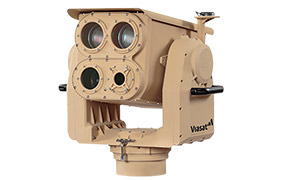Optical logic gates based on micro-electro-mechanical systems
The integration of optics with electronic devices using silicon technology is an alternative that offers faster processing speeds due to the wider bandwidth of optical signals. Further, devices based on optics have lower electromagnetic sensitivity and a smaller thermal budget.1,2 Moreover, the development of these electro-optical devices follows a natural path, since optical fibers are already used as a cheap, fast, and effective way to transfer optical information across long distances. To process optical signals, however, optical logic gates are required. Many different approaches have been realized using semiconductor optical amplifiers (SOA),3,4 SOA/Mach-Zehnder interferometers,5,6 free space digital optical systems,7 shadow-casting systems,8 and liquid crystal light valves.9 Other logic gates and optical switches have also been made using micro-electro-mechanical systems (MEMS),10–12 but most were made using free space optics. Here, we demonstrate an alternative method for processing optical signals using integrated micro-opto-electro-mechanical AND and OR logic gates that are based on a combination of optical and MEMS devices.

Our optical logic gates are formed by silicon-oxynitride-based optical waveguides, through which a light beam of 633nm can be propagated, and mobile thermo-electro-actuated cantilevers that work as on-off switches for the laser. These cantilevers contain an embedded thin film resistor. When no voltage is applied, the cantilever is horizontal and the waveguide is aligned—as shown in Figure 1(a)—enabling light to pass. When a voltage is applied to the metal contacts, current flows through the resistor and heats up the cantilever, which moves due to the difference on thermal expansion of the materials. This misaligns the waveguide, blocking the light path, as shown in Figure 1(b).
The OR gate is realized by combining two switches in parallel, in which there will no be light at the output only when both switches are misaligned. On the other hand, the AND gate uses two switches in series, so light is present at the output when both switches are aligned.

We fabricated waveguides using SiOxNy, which is an attractive material for integrated optical circuits. We can control the refractive index of this material over a range from 1.46 to 2.0, depending of the nitrogen content of the material.13 Optical waveguides made of SiOxNy have shown low propagation losses,14 and films with high optical quality can be deposited at low temperatures (320°C)15 by plasma-enhanced chemical vapor deposition (PECVD) using appropriate gaseous mixtures of silane-nitrogen.16,17
These films are also mechanically and structurally stable and showed low etch rates in potassium hydroxide solutions, normally used in bulk micromachining of silicon.18 The motion of the cantilevers resulted in vertical displacements of 30μm at frequencies up to 150Hz with no reduction of amplitude. We also measured frequencies up to 2.5kHz with smaller amplitudes.19
The fabrication details of the optical logic gates are described elsewhere.20 Figure 2(a) shows part of two AND gates with two optical switches, where one switch is aligned and the other is not. In Figure 2(b), light is being inserted in the waveguide with a closed switch. It is possible to see that light enters the cantilever, crosses the air-gap, and re-enters the waveguide, where part of the light is reflected due to a step formed by the resistor metallization.
The fabricated optical logic gates are alternatives for processing optical signals in an effort to develop new technologies that will result in better performance with faster processing of information. By combining integrated optics and micro-electro-mechanical systems it was possible to fabricate optical switches to process optical information in basic logic functions such as AND and OR.
This work was financially supported by FAPESP (Process Number 00/10027-3 and 05/55967-7) and by CNPq (304741/2002-7 and 301564/2005-1).



